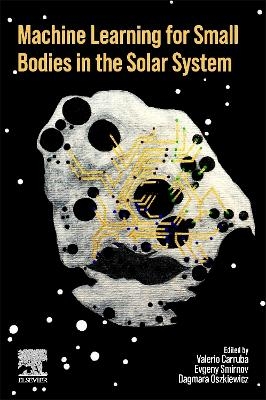
Machine Learning for Small Bodies in the Solar System
Elsevier - Health Sciences Division (Verlag)
978-0-443-24770-5 (ISBN)
- Noch nicht erschienen (ca. Januar 2025)
- Versandkostenfrei innerhalb Deutschlands
- Auch auf Rechnung
- Verfügbarkeit in der Filiale vor Ort prüfen
- Artikel merken
Prof. Valerio Carruba is currently an Associate Professor at the São Paulo State University (UNESP) in Brazil. He is one of the founders of the Machine Learning applied to Small Bodies (MASB) research group. His recent interests involve the use of deep learning for the identification of asteroids in secular resonant configurations and machine learning applied for asteroid families’ identification. Asteroid 10741 has been named “Valeriocarruba by the International Astronomical Union. His paper “Optimization of artificial neural networks models applied to the identification of images of asteroids’ resonant arguments recently won the CELMEC prize for "Innovative computational methods in Dynamical Astronomy". Dr. Evgeny Smirnov works in the field of the dynamics of asteroids. In 2017, he introduced a machine learning approach based on the supervised learning for the identification procedure that decreases the computational time from weeks to seconds. In the same year, he proposed a similar approach for asteroid families instead of the classical HCM method. With a strong background in science and software development, Evgeny connects these areas and brings modern software development patterns and techniques into the field of astronomy. Prof. Dagmara Oszkiewicz is a Polish astronomer and planetary scientist. She is an assistant professor at Adam Mickiewicz University in Poznań, Poland, where her research focuses on physical and orbital properties of small Solar System bodies. She has recently expanded her research to include machine learning techniques to the analysis of asteroid spectro-photometric data; her latest work includes applications of machine learning algorithms to the classification of basaltic asteroids in the context of formation of differentiated planetesimals and comparison of various machine learning algorithms for classification of spectro-photometric data from various large sky surveys.
Artificial intelligence and machine learning methods in celestial mechanics
Identification of asteroid families’ members
Asteroids inmean-motion resonances
Asteroid families interacting with secular resonances
Neural networks in celestial dynamics: capabilities, advantages, and challenges in orbital dynamics around asteroids
Asteroid spectro-photometric characterization
Machine learning-assisted dynamical classification of trans-Neptunian objects
Identification and localization of cometary activity in Solar System objects withmachine learning
Detectingmoving objects with machine learning
Chaotic dynamics
Conclusions and future developments
| Erscheint lt. Verlag | 1.1.2025 |
|---|---|
| Verlagsort | Philadelphia |
| Sprache | englisch |
| Maße | 152 x 229 mm |
| Themenwelt | Naturwissenschaften ► Physik / Astronomie ► Astronomie / Astrophysik |
| Technik ► Luft- / Raumfahrttechnik | |
| ISBN-10 | 0-443-24770-6 / 0443247706 |
| ISBN-13 | 978-0-443-24770-5 / 9780443247705 |
| Zustand | Neuware |
| Haben Sie eine Frage zum Produkt? |
aus dem Bereich


